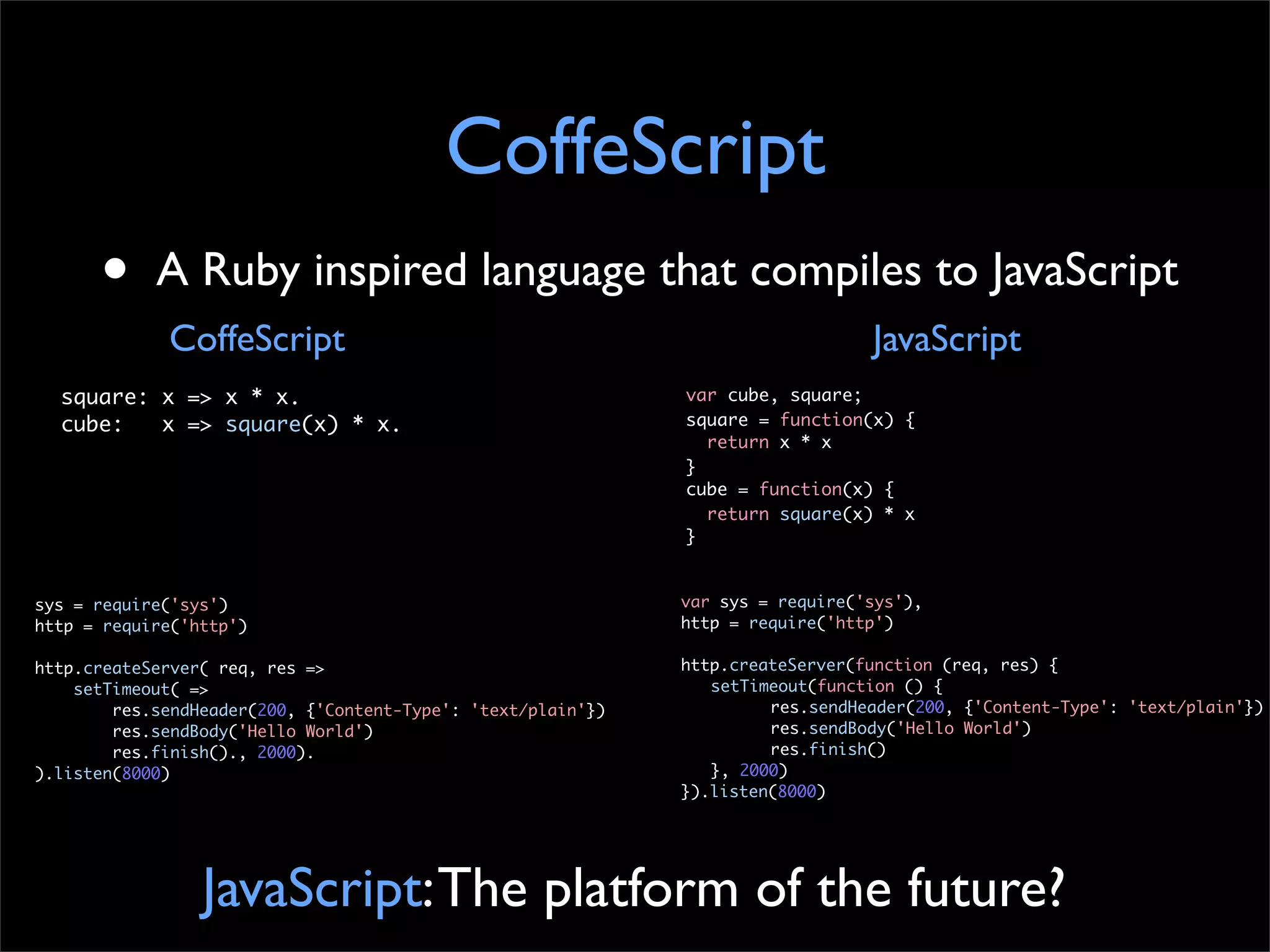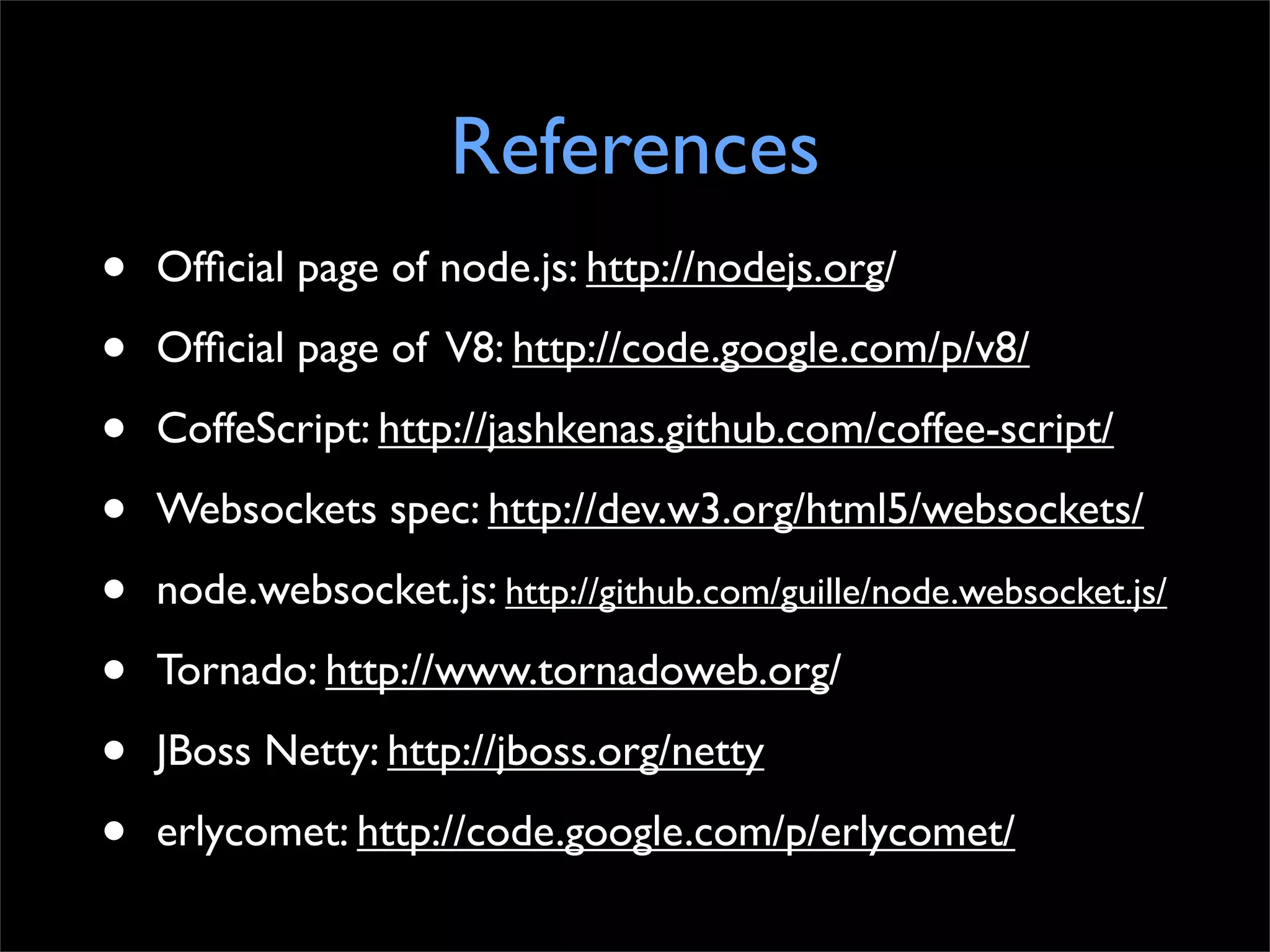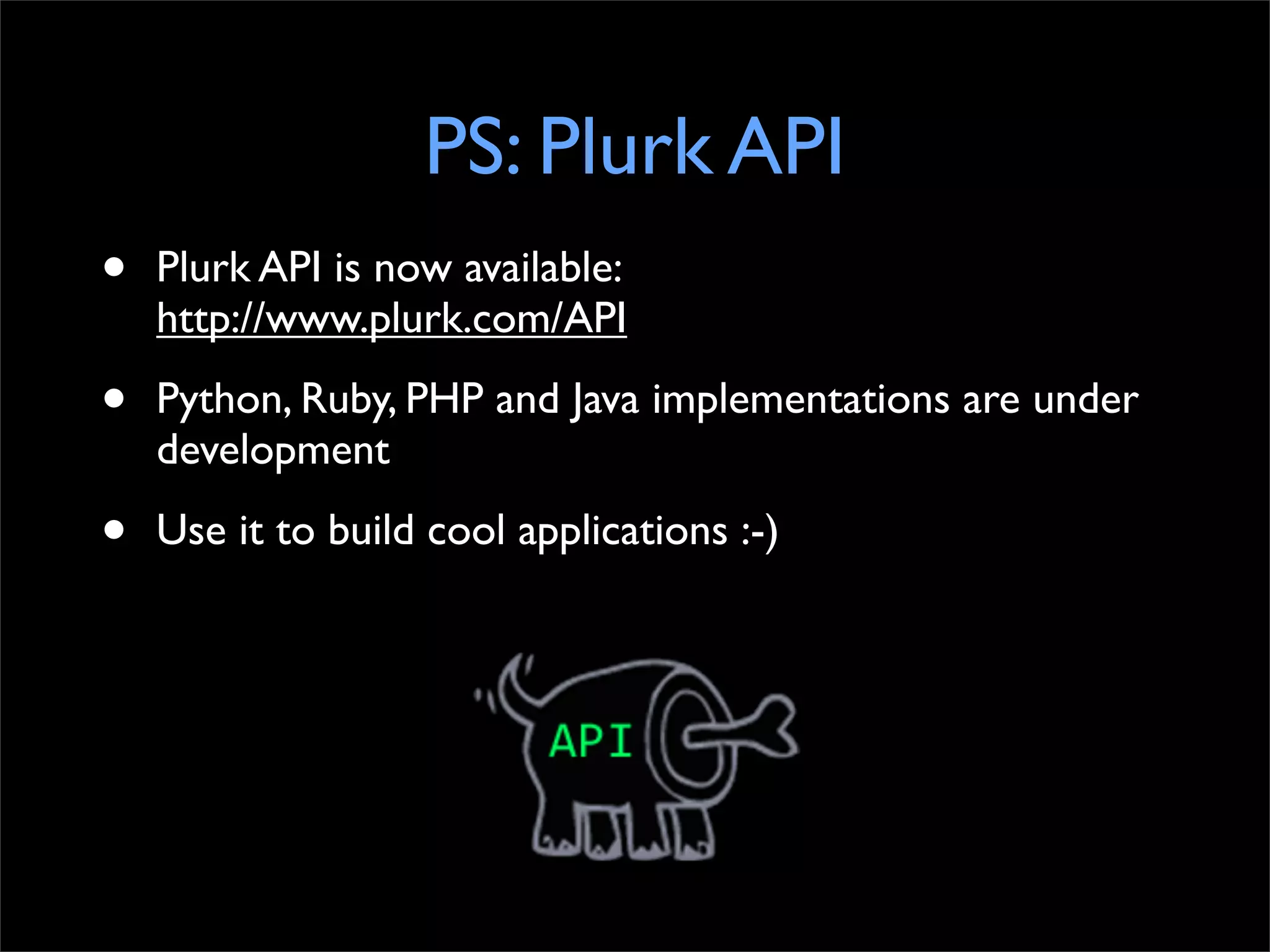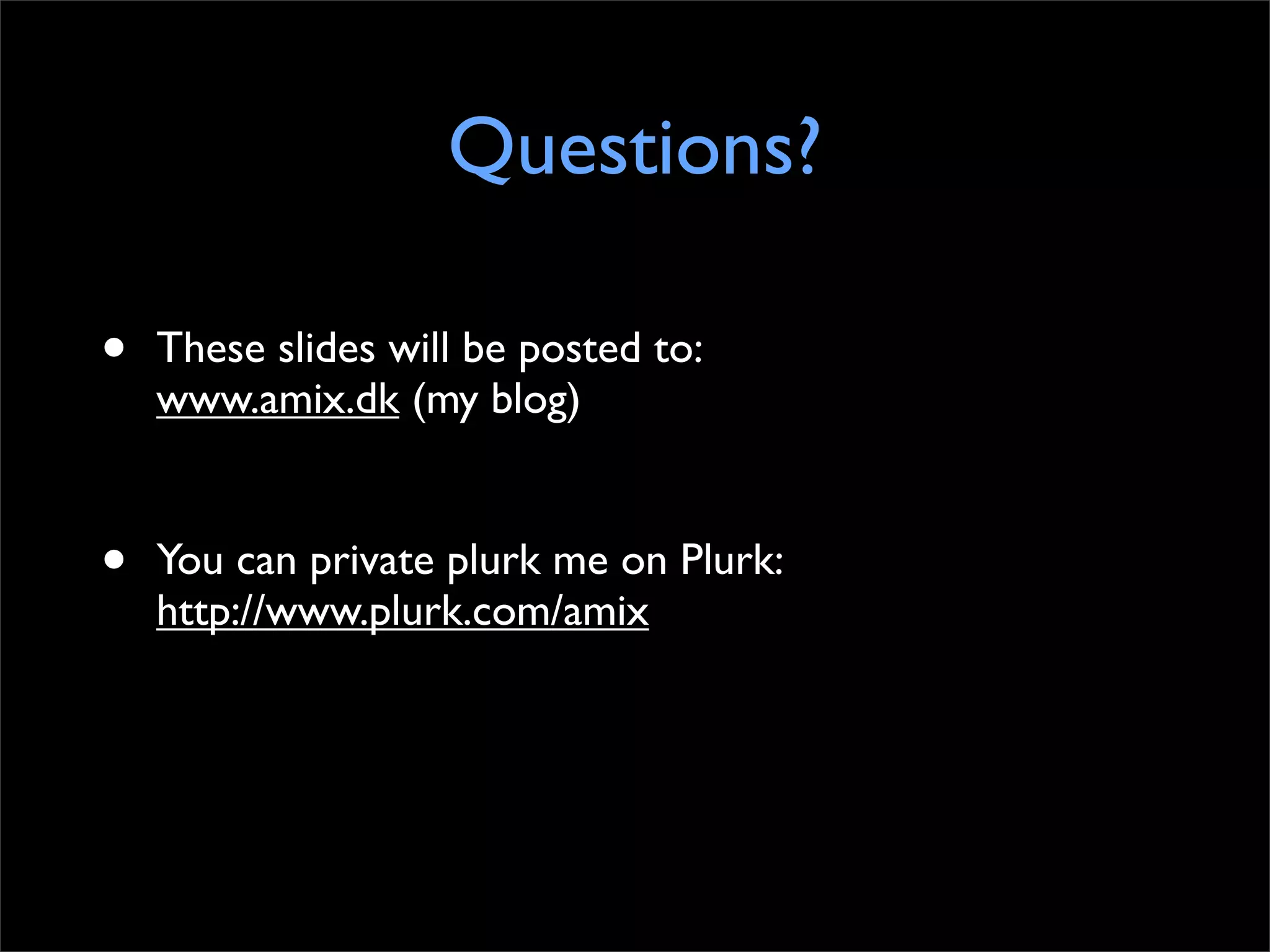Node.js is a platform built on Google's V8 JavaScript engine that allows for non-blocking and event-driven web servers. It is well-suited for building real-time applications using techniques like Comet that require persistent connections to clients. The speaker demonstrates how to implement a basic chat application using WebSockets with node.js that maintains open connections to allow real-time messaging between users. Node.js's asynchronous and non-blocking model makes it a natural fit for Comet-style programming compared to traditional threaded server models.
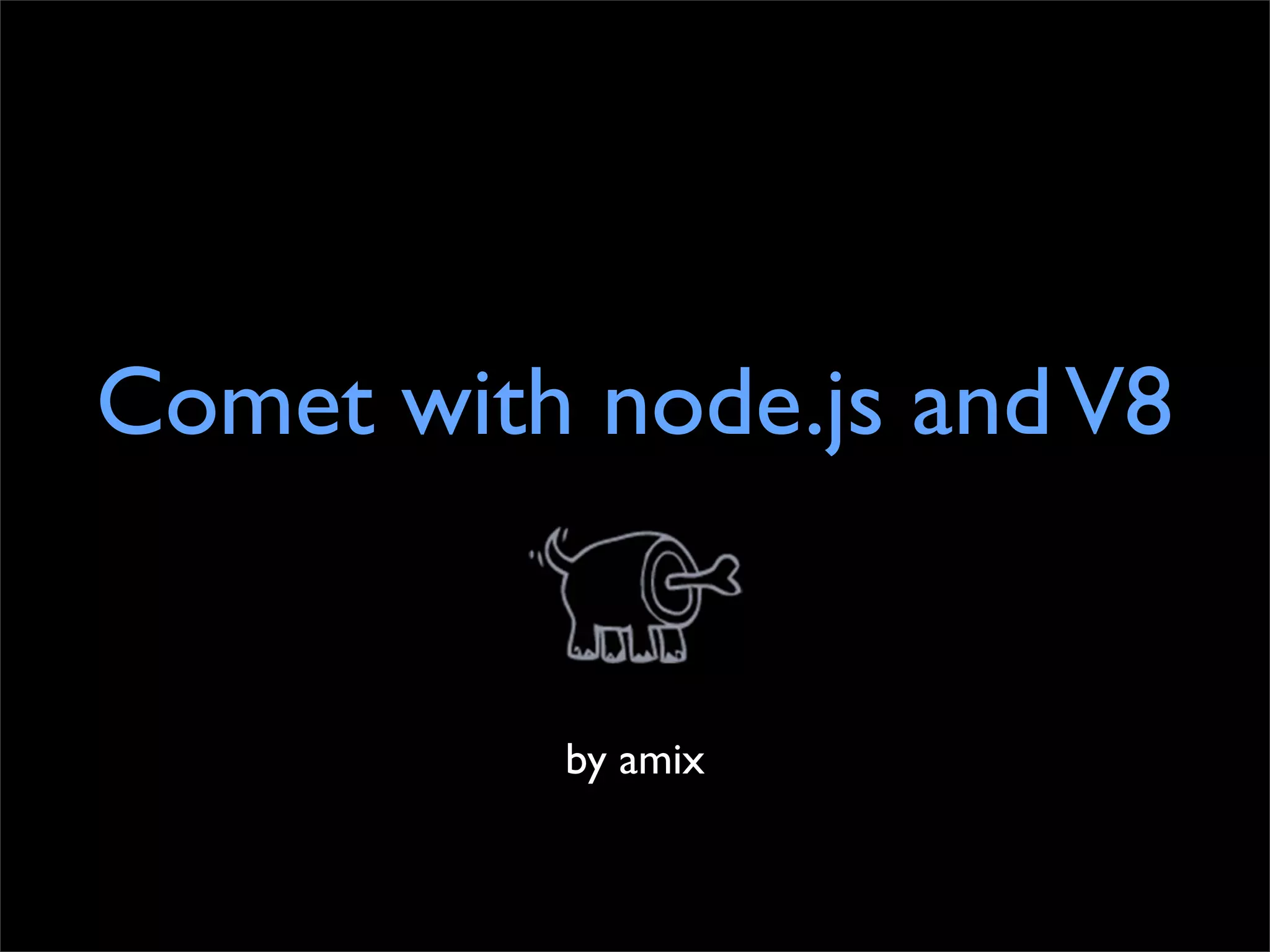
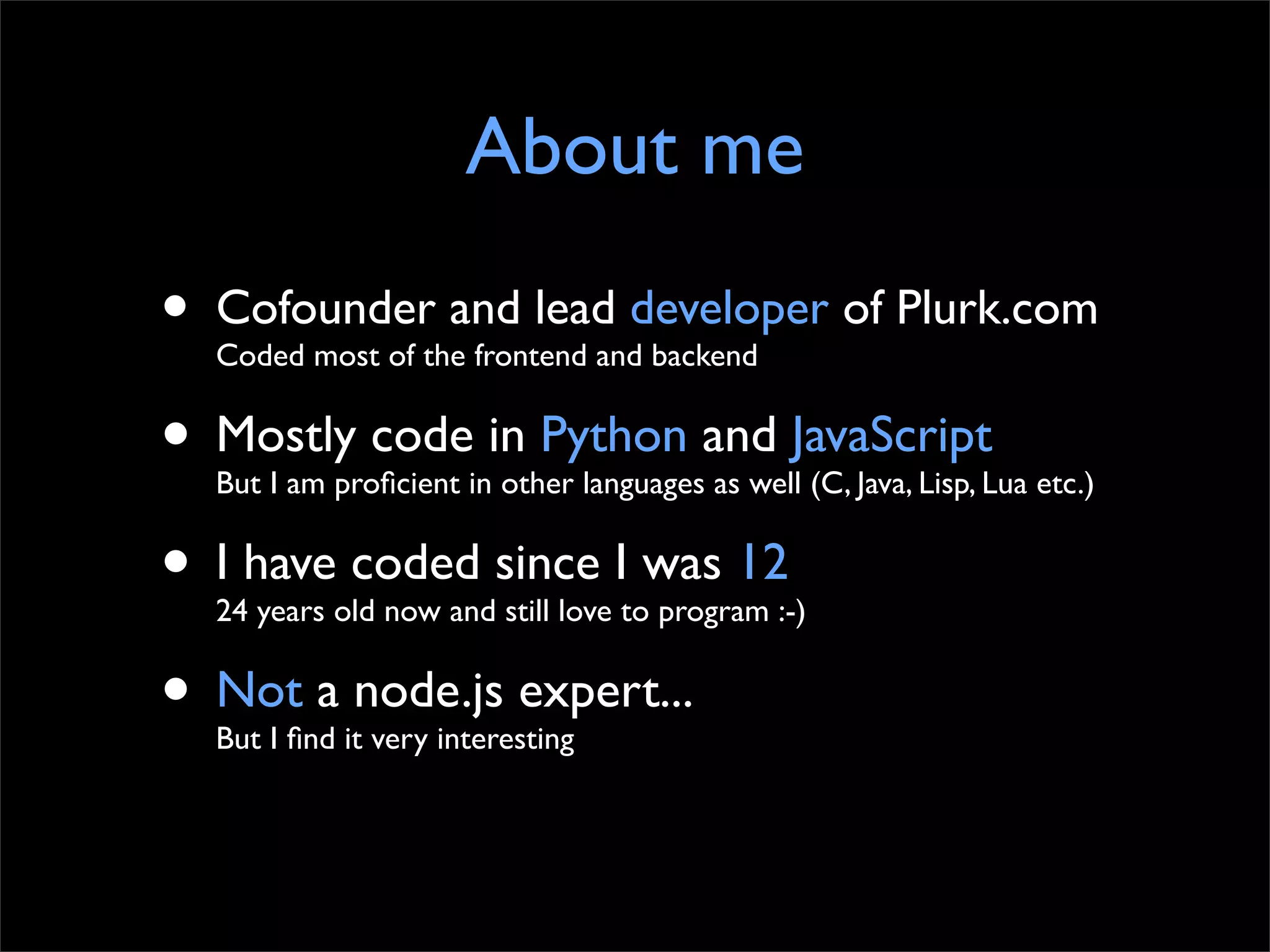
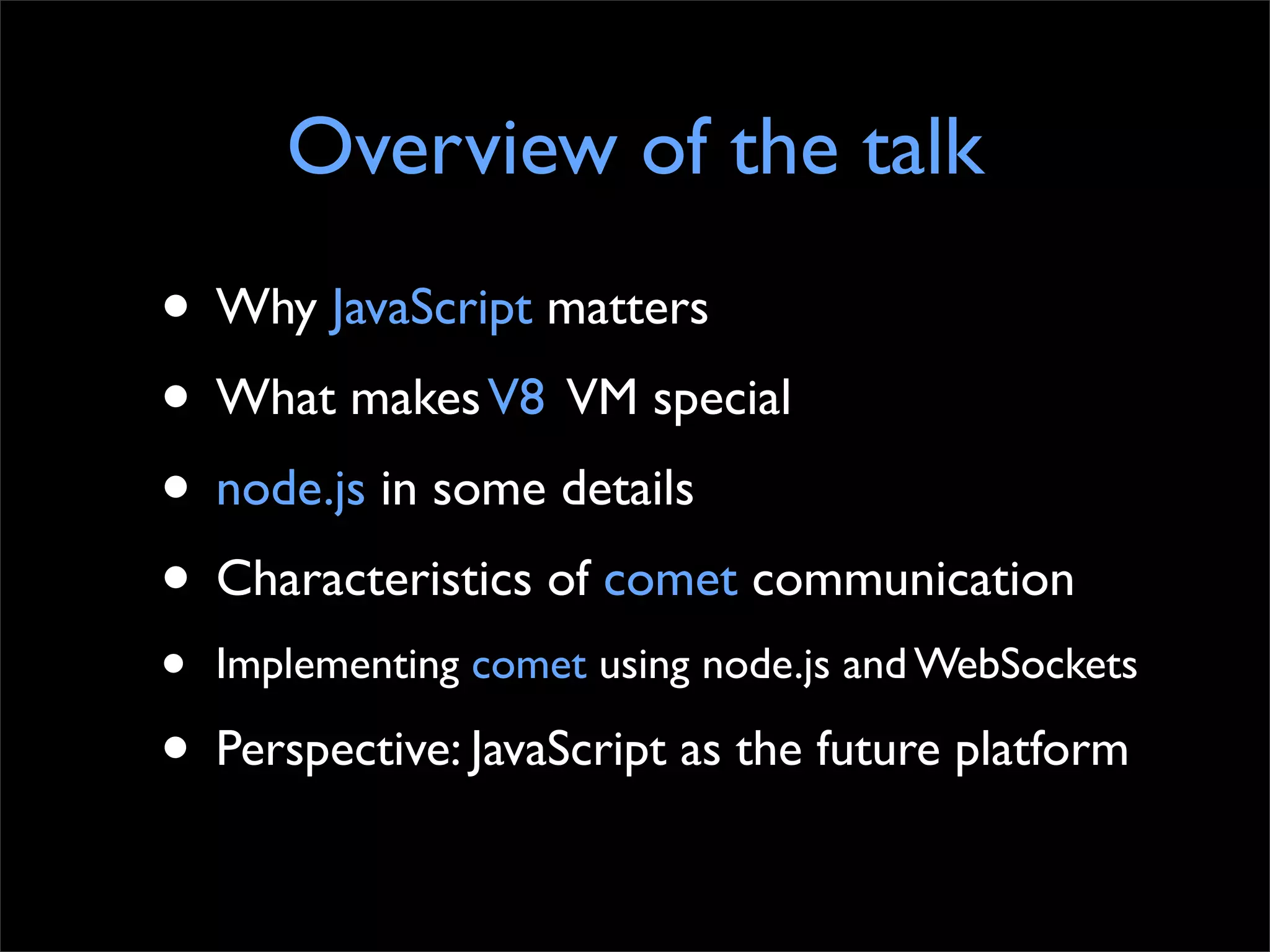
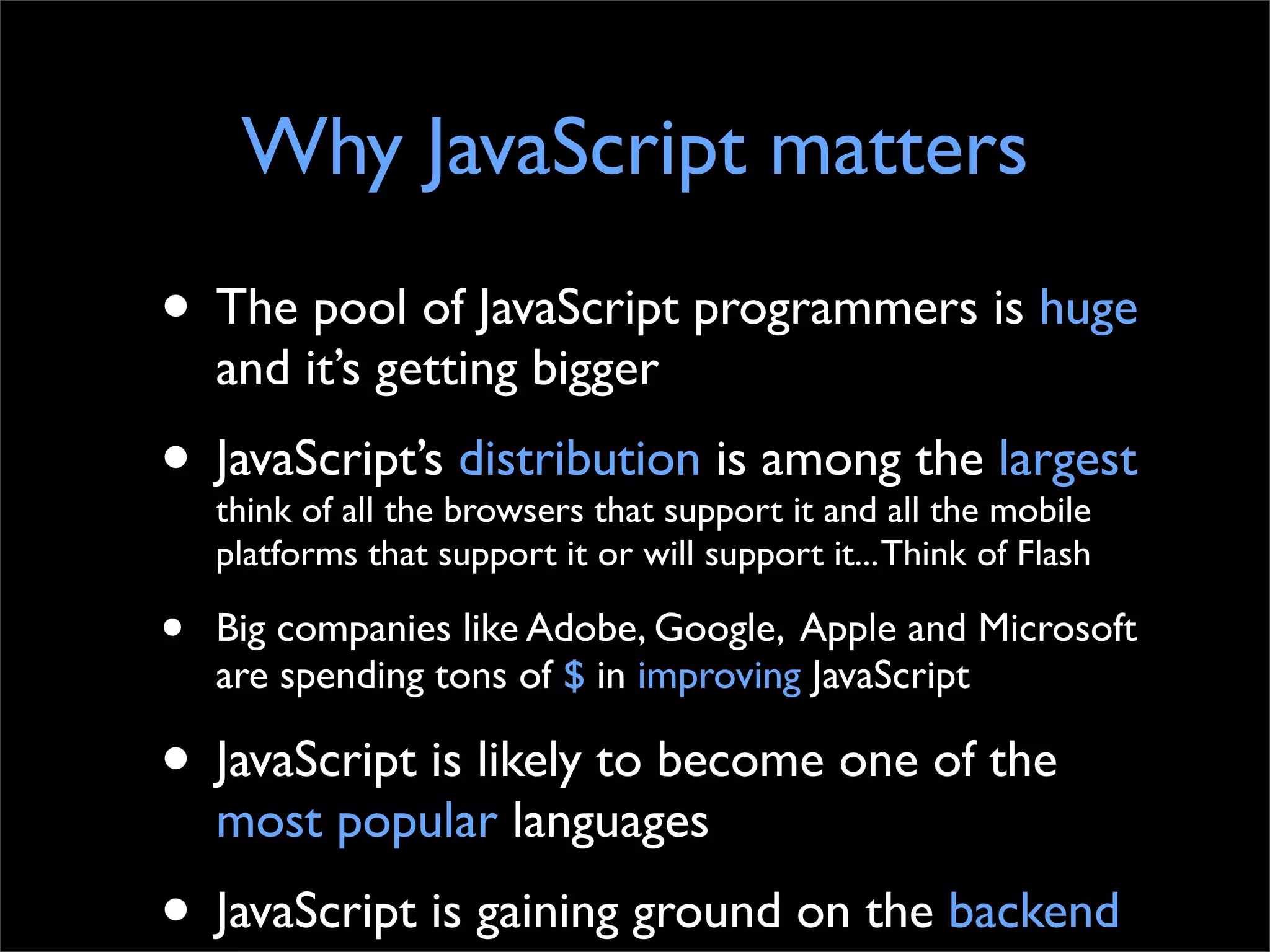
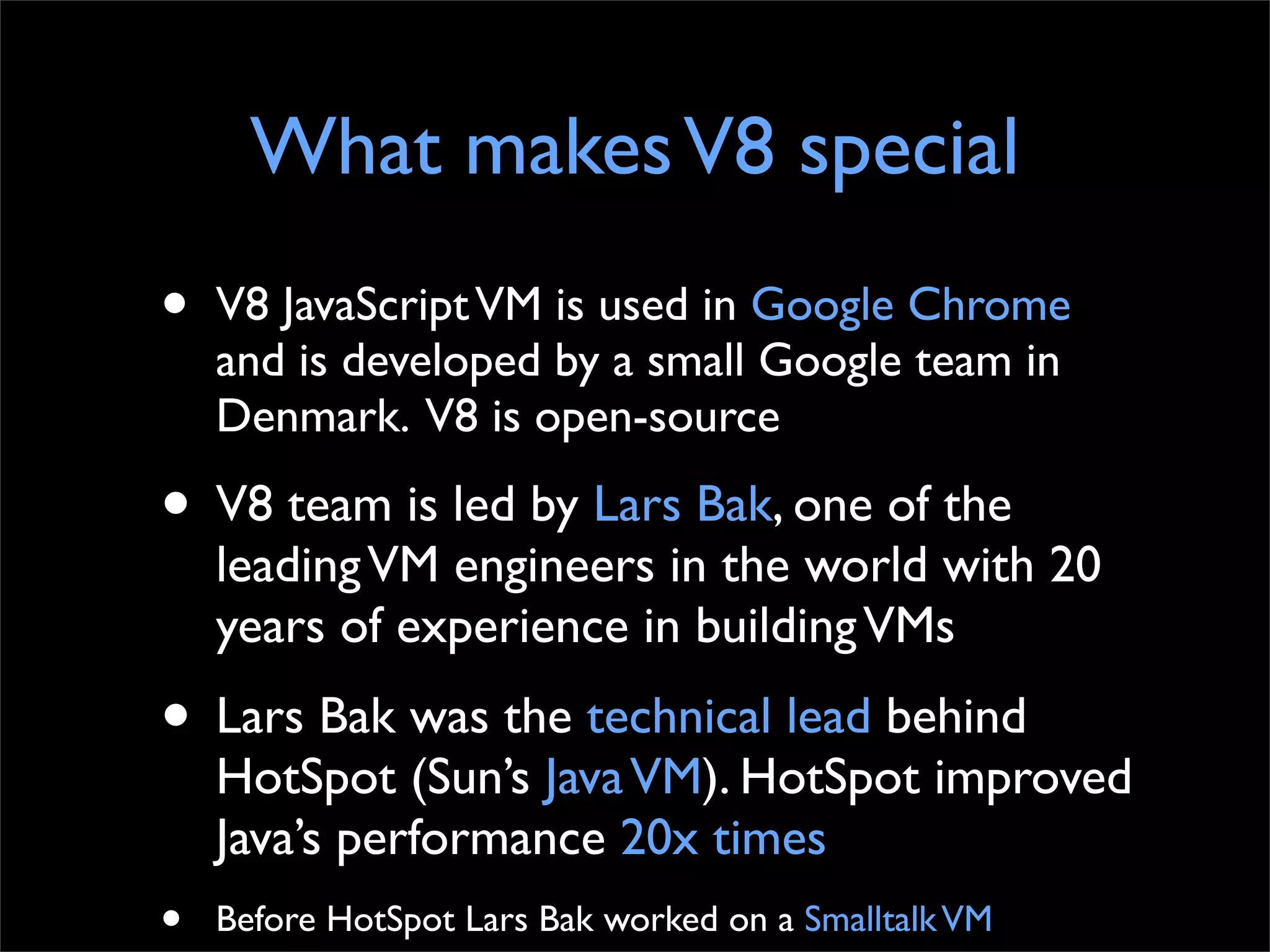
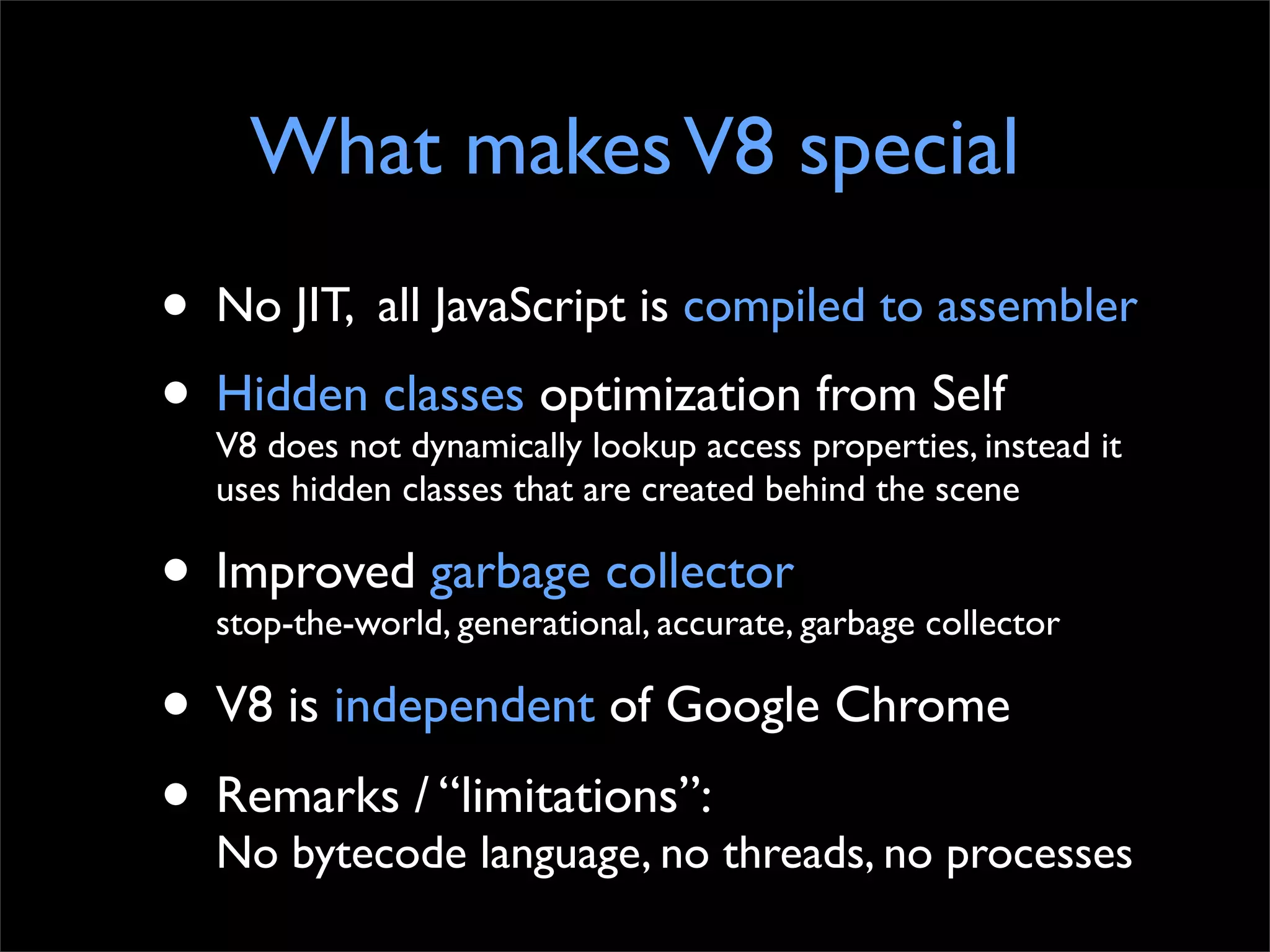
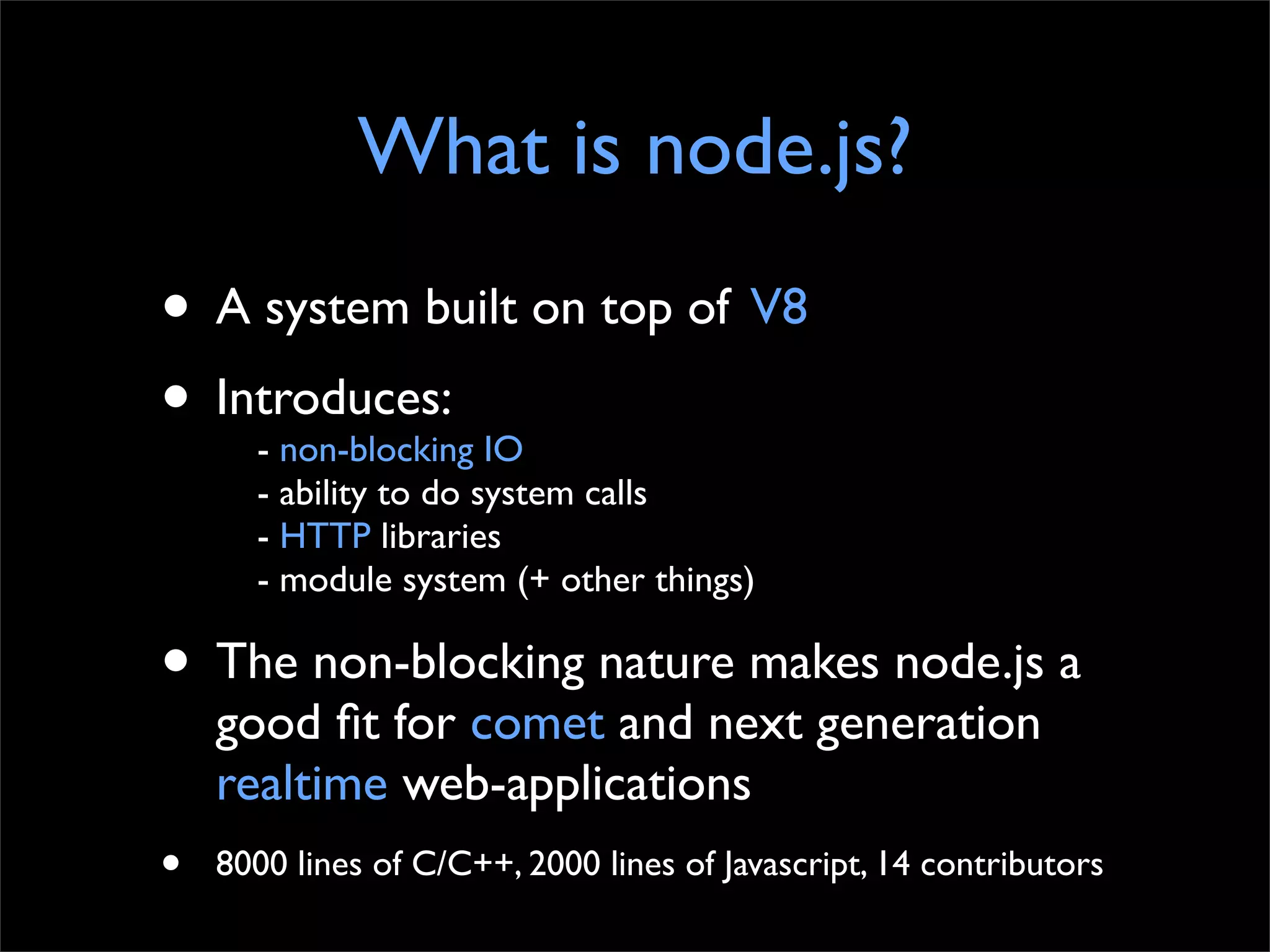
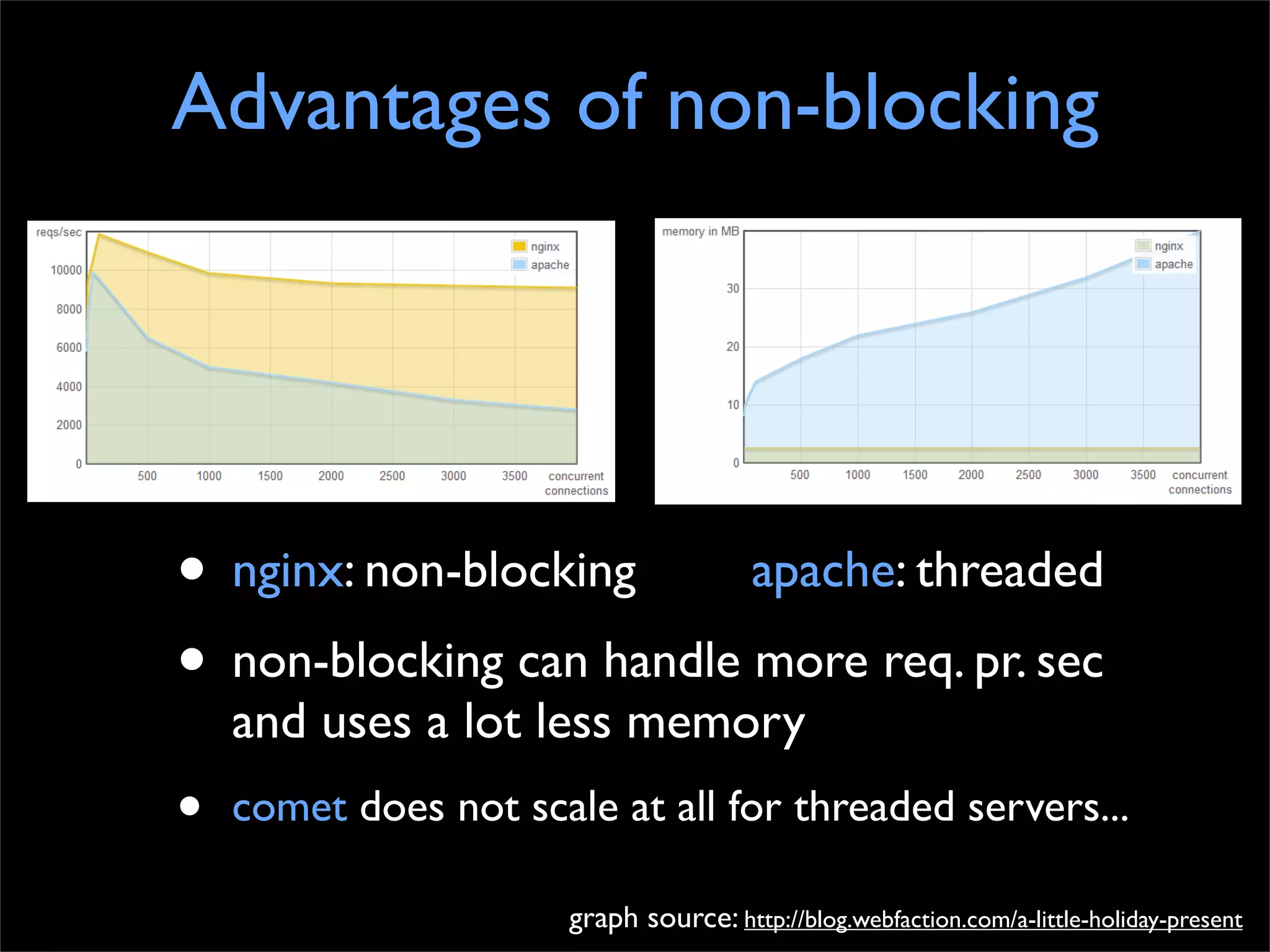
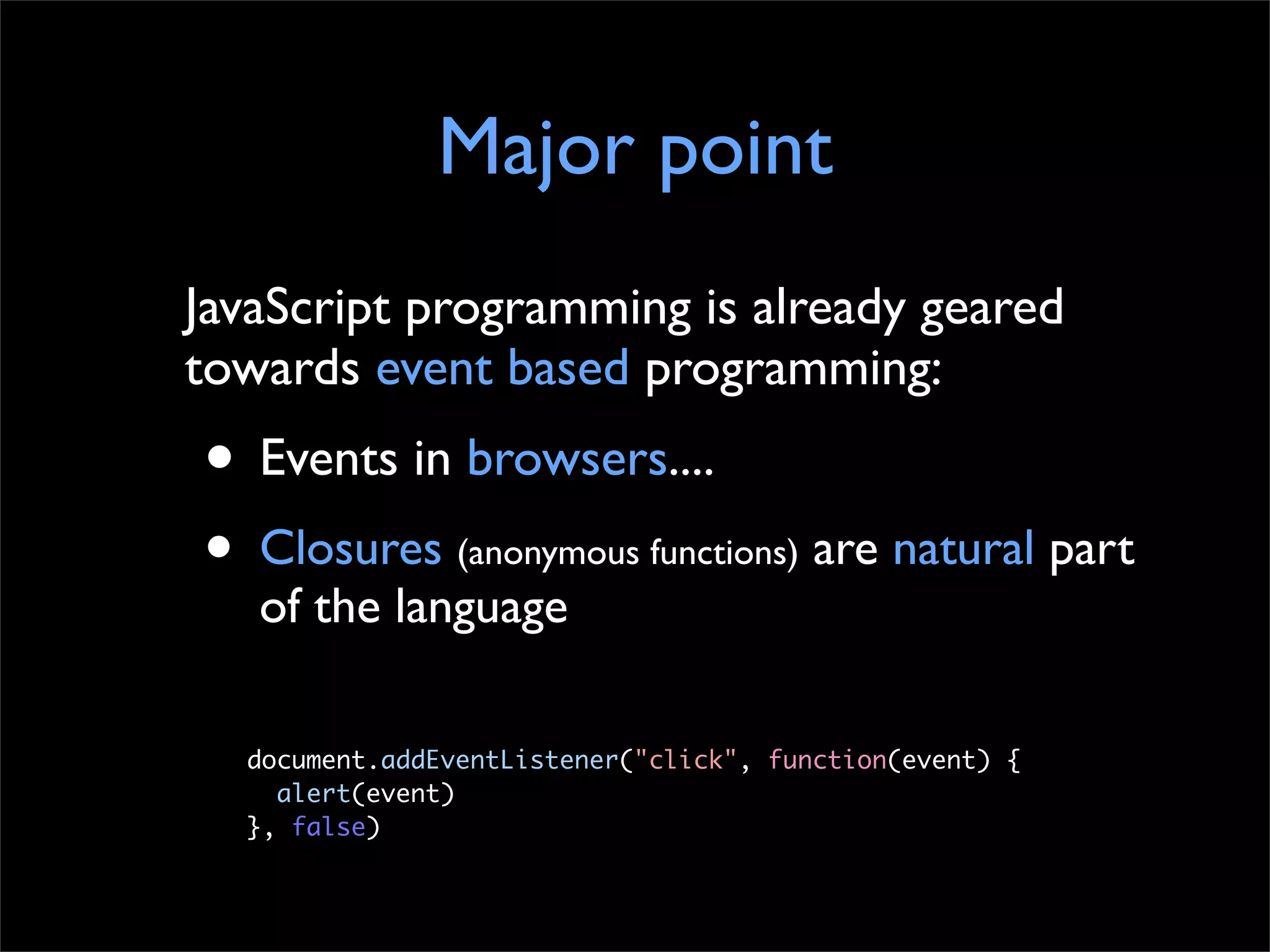
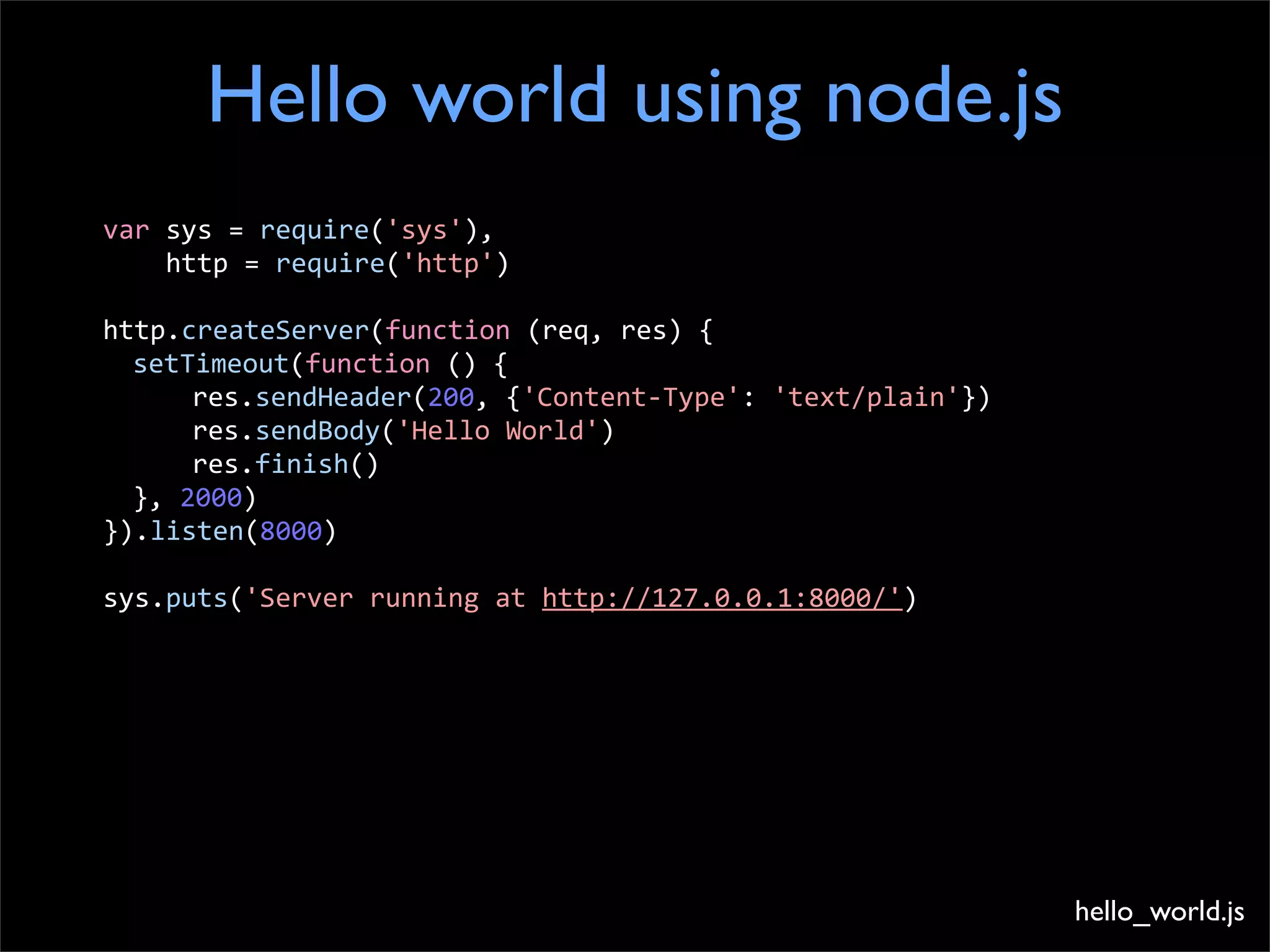
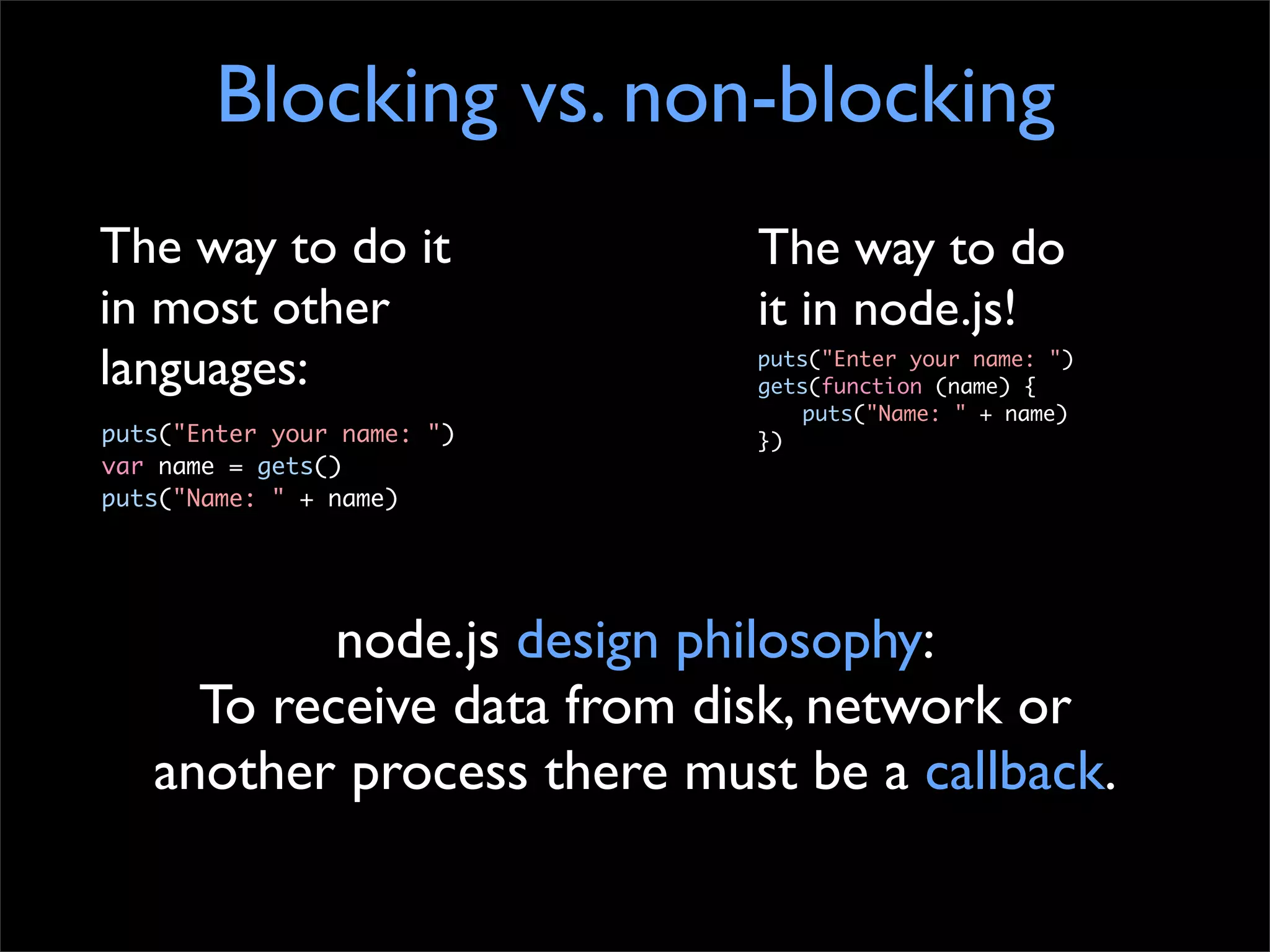
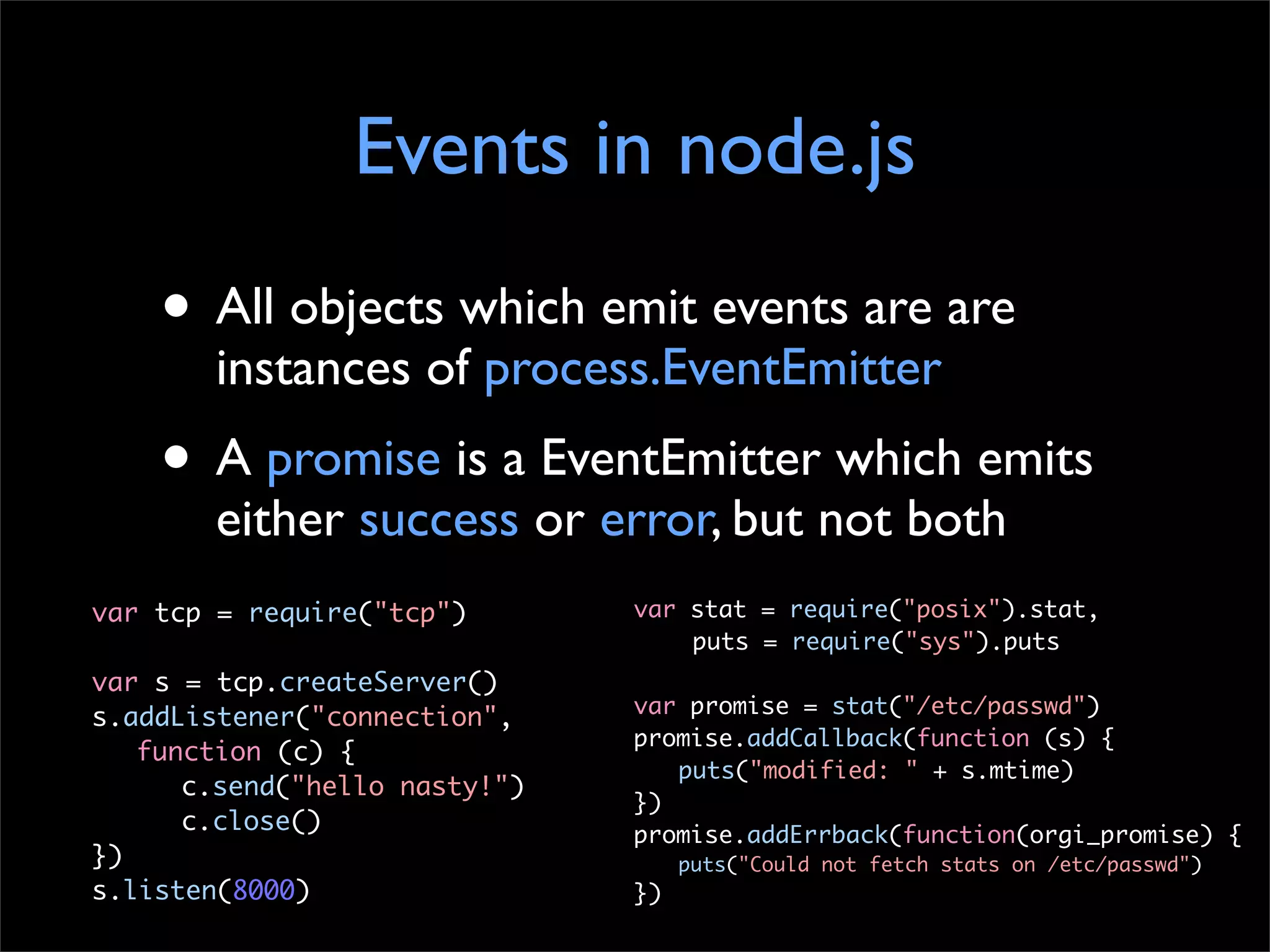
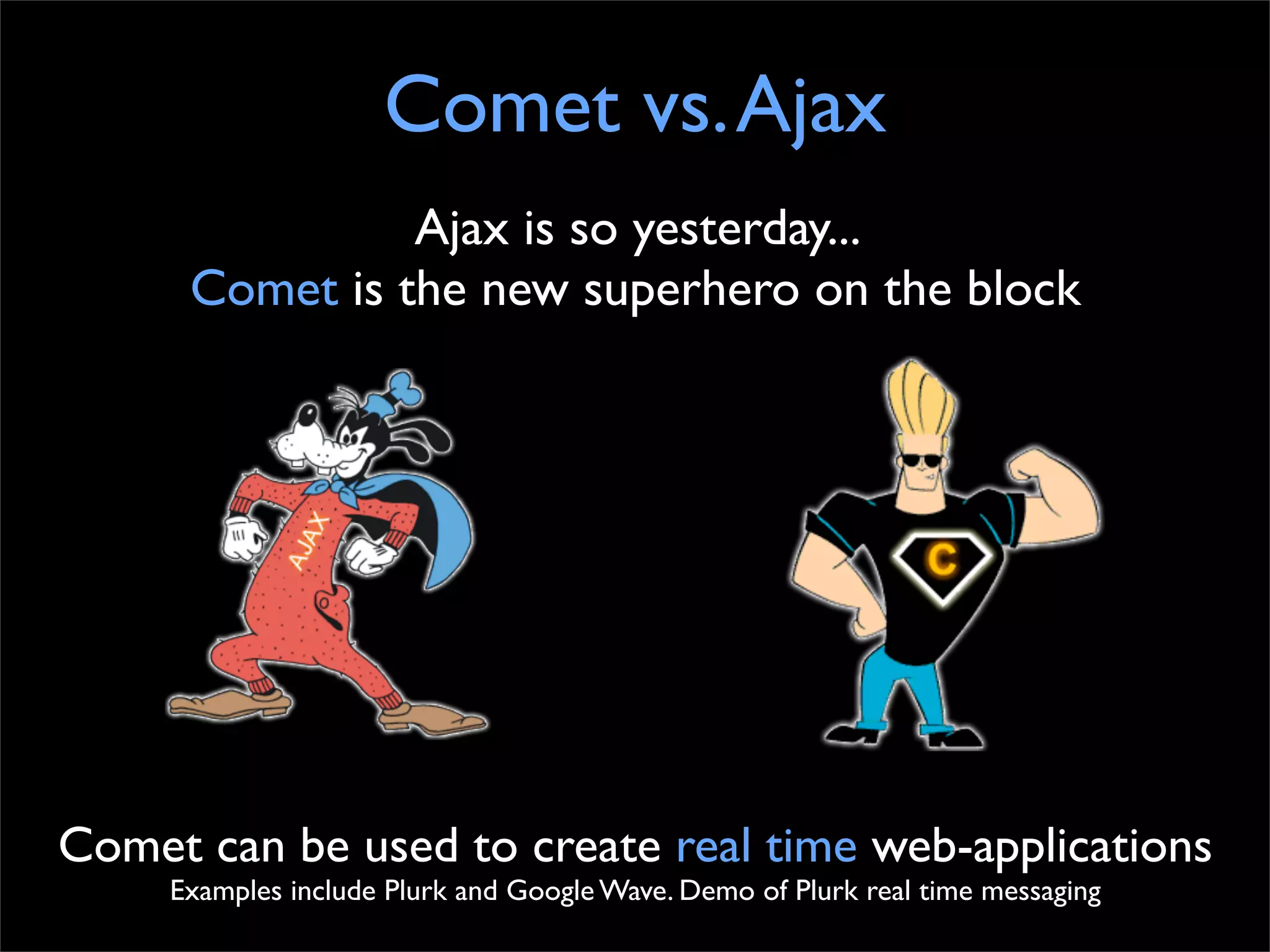
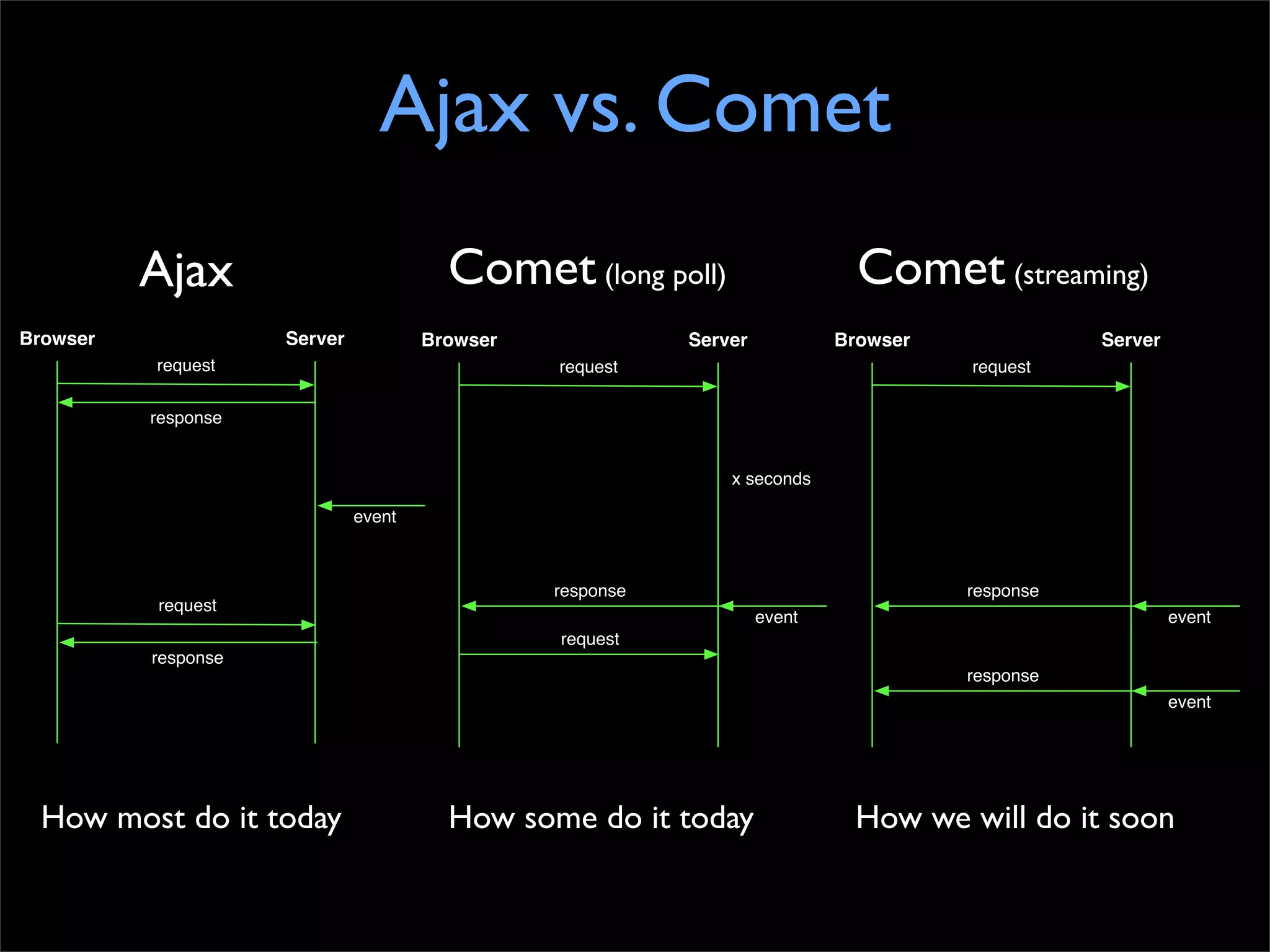
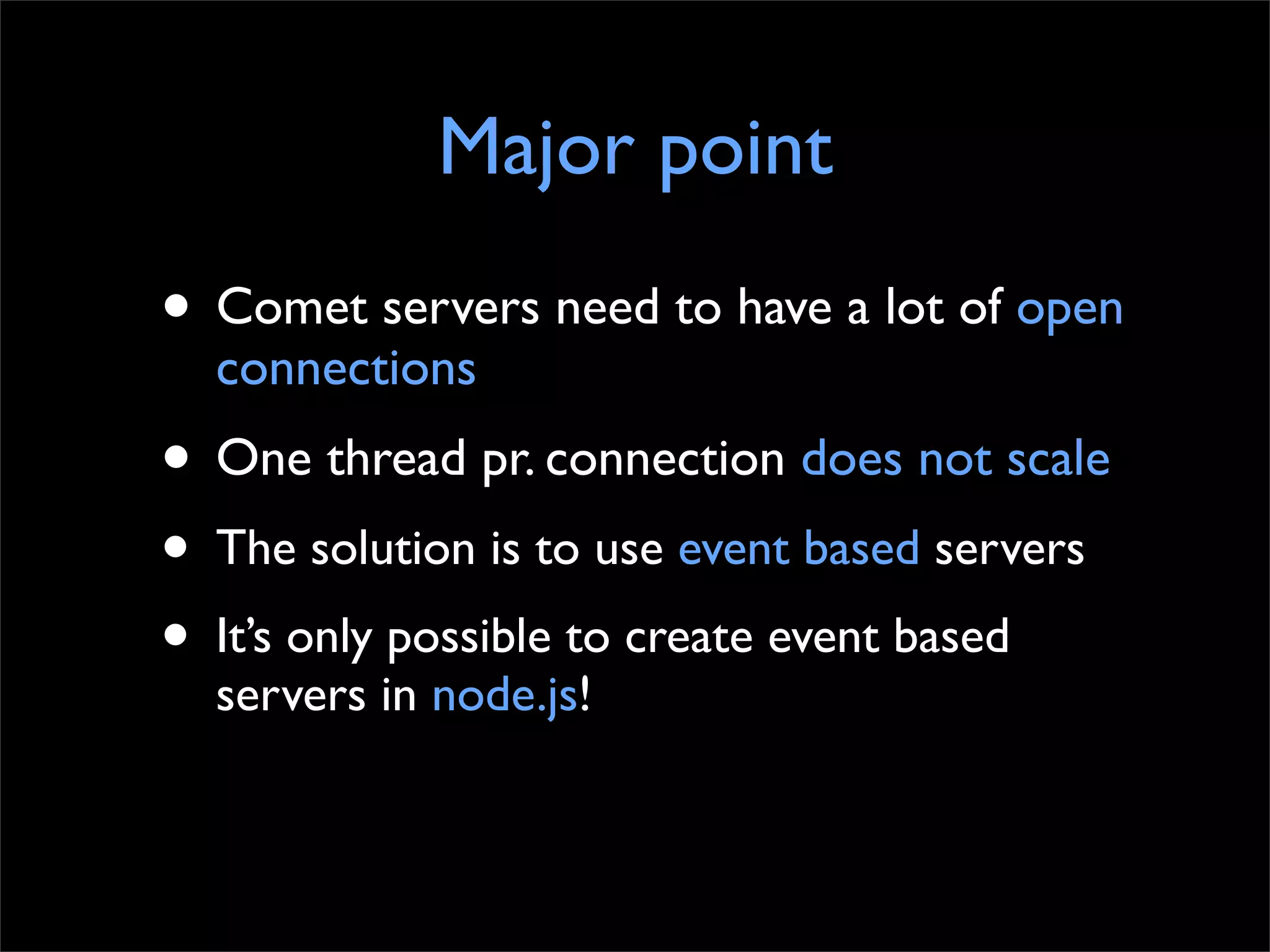
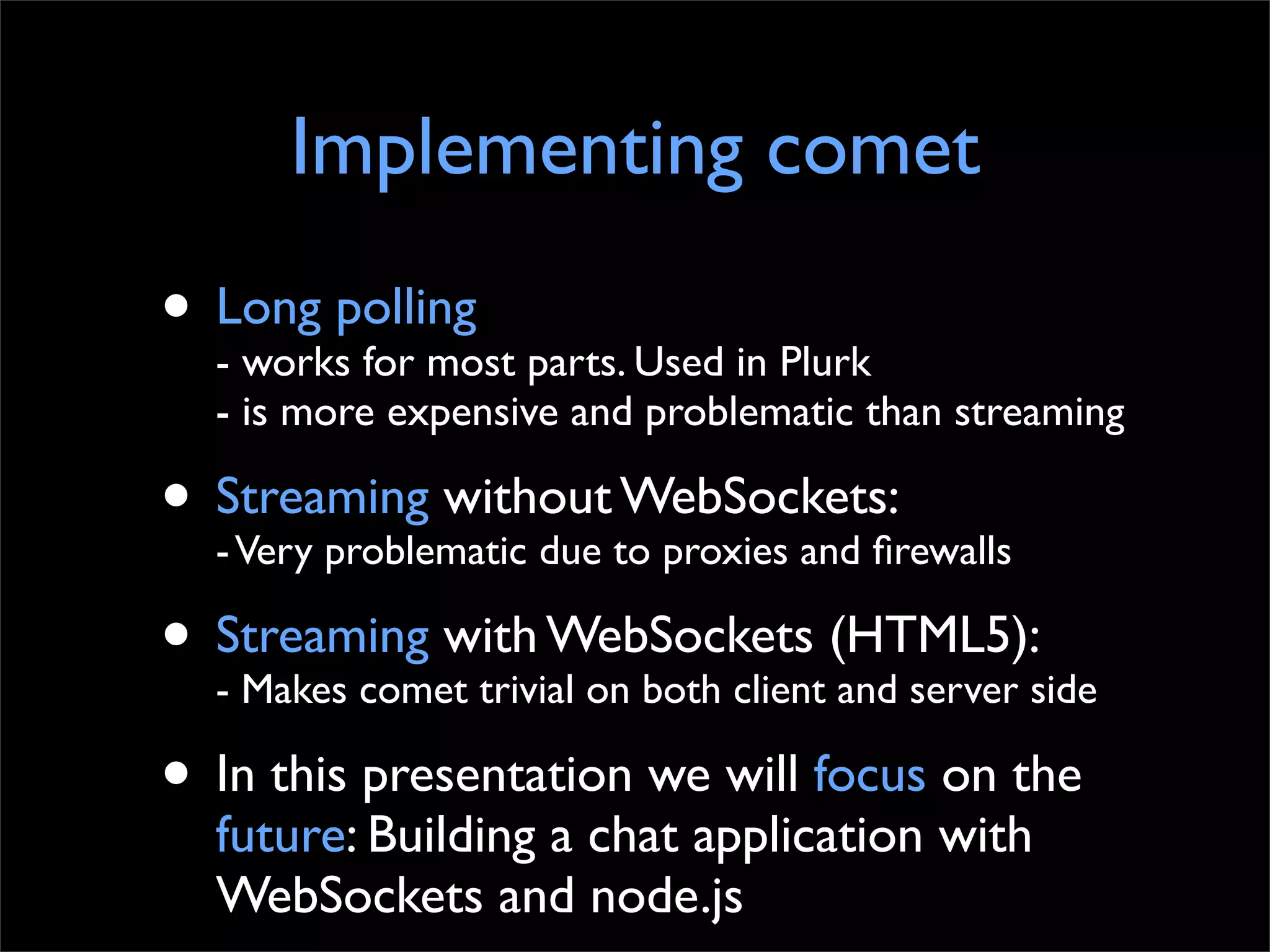
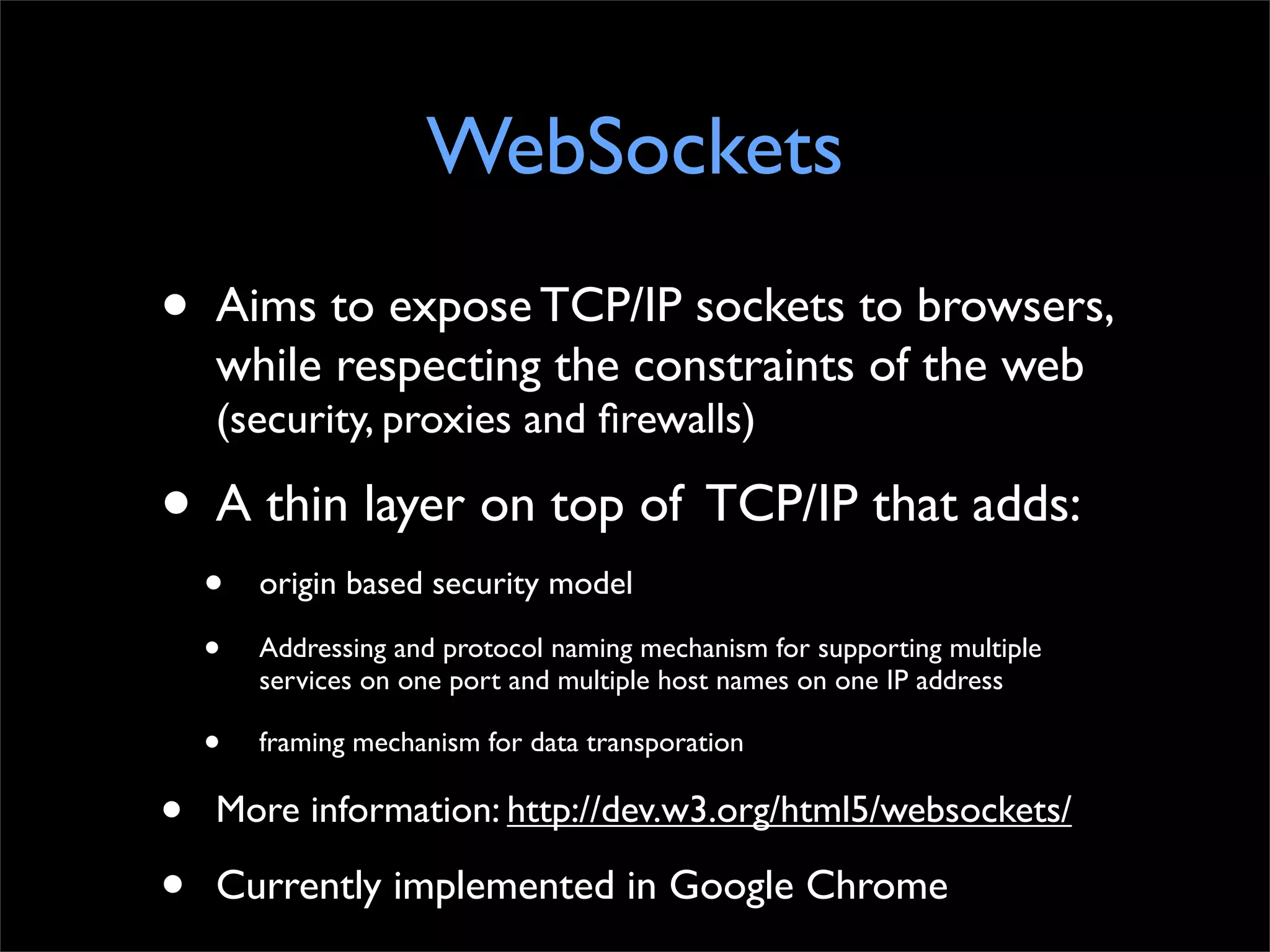
![node.websocket.js implementation
demo
var
sys
=
require('sys') Room = {
members
=
[] init: function() {
Room.ws = new WebSocket('ws://127.0.0.1:8080/chat')
var
Module
=
this.Module
=
function()
{
} Room.ws.onopen = Room._onopen
Room.ws.onmessage = Room._onmessage
Module.prototype.onData
=
function(data,
connection)
{ Room.ws.onclose = Room._onclose
for(var
i
in
members) },
//...
members[i].send(data)
_send: function(user, message){
};
Room.ws.send(serializeJSON({
'from': user,
Module.prototype.onConnect
=
function(connection)
{ 'message': message
members.push(connection) }))
} },
_onmessage: function(m) {
Module.prototype.onDisconnect
=
function(connection)
{ if (m.data) {
for(var
i
in
members)
{ var data = evalTxt(m.data)
if(members[i]
==
connection)
{
members.splice(i,
1) from = data.from
break; message = data.message
} //...
}
}
Note: I have patched
node.websocket.js to include onConnect...](https://image.slidesharecdn.com/cometwithnodejsv8-091229102648-phpapp02/75/Comet-with-node-js-and-V8-18-2048.jpg)
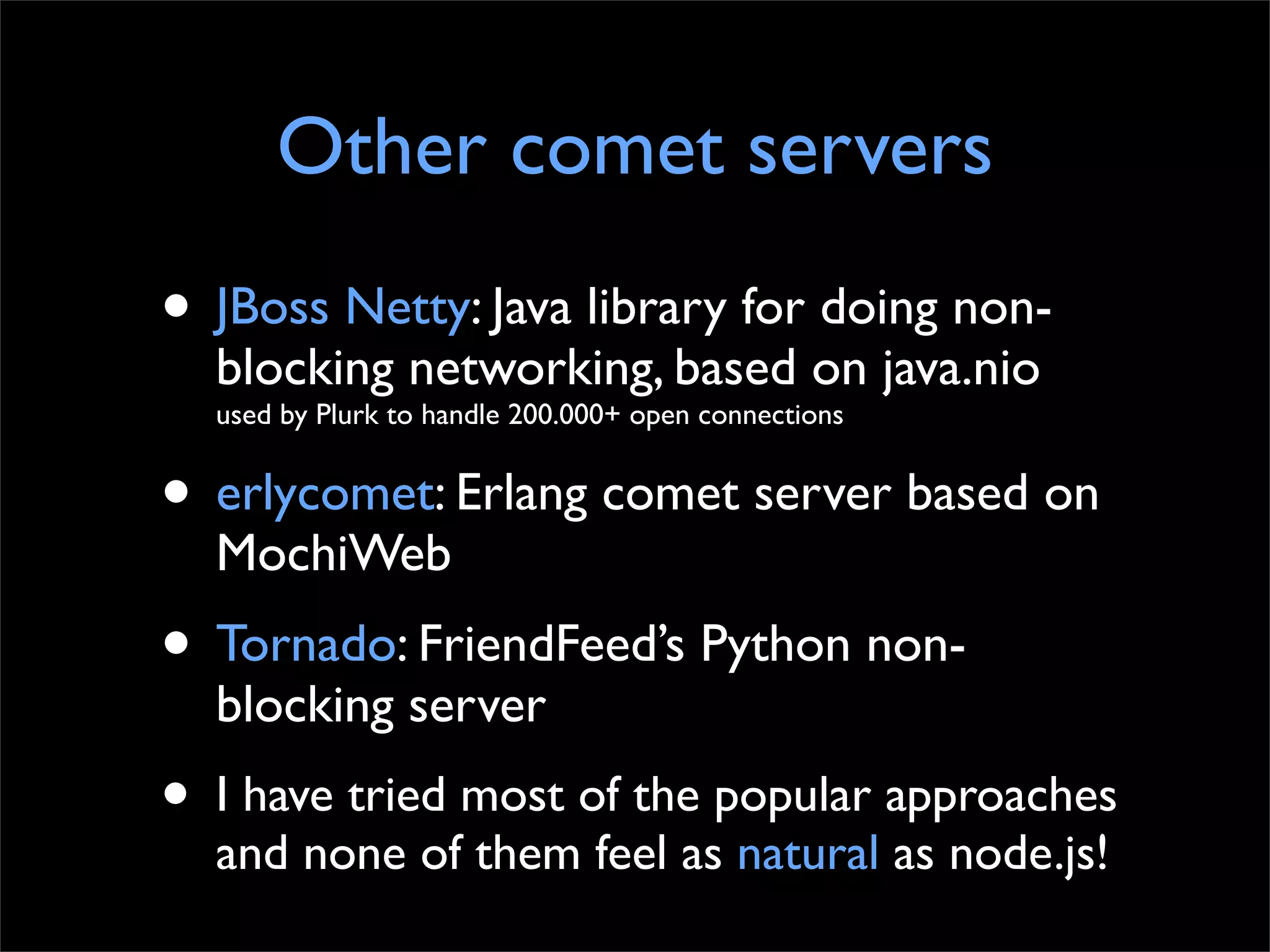
![How does node.js perfrom?
• Hello World benchmark node.js vs. Tornado
non scientific - take it with a grain of salt!
• Tornado is one of the fastest Python based servers
$ ab -c 100 -n 1000 http://127.0.0.1:8000/ $ ab -c 100 -n 1000 http://127.0.0.1:8000/
Concurrency Level: 100 Concurrency Level: 100
Time taken for tests: 0.230 seconds Time taken for tests: 0.427 seconds
Complete requests: 1000 Complete requests: 1000
Failed requests: 0 Failed requests: 0
Write errors: 0 Write errors: 0
Total transferred: 75075 bytes Total transferred: 171864 bytes
HTML transferred: 11011 bytes HTML transferred: 12276 bytes
Requests per second: 4340.26 [#/sec] (mean) Requests per second: 2344.36 [#/sec] (mean)
Time per request: 23.040 [ms] (mean) Time per request: 42.656 [ms] (mean)
Time per request: 0.230 [ms] Time per request: 0.427 [ms]
Transfer rate: 318.21 [Kbytes/sec] Transfer rate: 393.47 [Kbytes/sec]
node.js Tornado](https://image.slidesharecdn.com/cometwithnodejsv8-091229102648-phpapp02/75/Comet-with-node-js-and-V8-20-2048.jpg)
